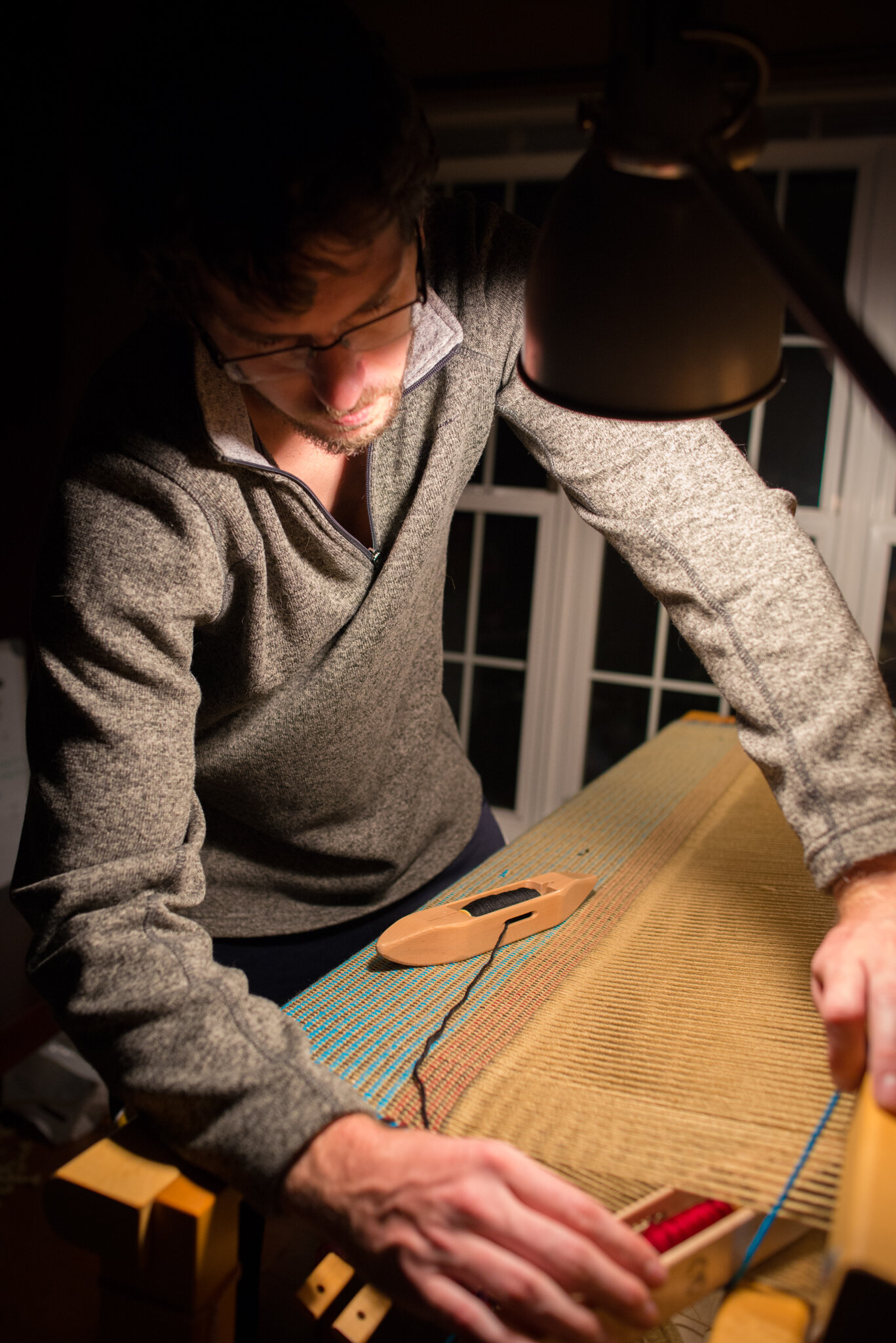
“I tell a different story through every fiber I spin and weave.”We wanted to source the best supplies for our own weaving studio, so we started building connections with fiber mills and farms around the world, from Peru to Italy to as far away as India. We started importing our favorite products in bulk, like soft alpaca fiber, high-quality cochineal, fine silks, and everything else we enjoyed working with. We decided to start Shepherd Textiles so we could share those products with other fiber artists. Unlike other fiber shops, we don’t try to sell a little bit of everything—we sell a highly curated selection of products that are mostly exclusives. If we sell it, we vouch that it’s the best of its kind.
Shepherd Textiles is a Washington-based weaving studio and supplier of fine yarns and rovings.
Weaving
“My interest in weaving started five years ago, when I started my own homestead with different breeds of sheep and alpacas. I wanted to understand the entire process of going from fleece to fabric. I learned how to shear them, pick and scour the wool, card it, spin it, dye it, weave it, and finally how to sew the fabric into a finished product. The first loom I bought was a 60-inch LeClerc floor loom, which I taught myself to weave on. Later, after I sold the farm and moved closer to the city, I bought a Glimåkra. Glimåkras are Swedish-made countermarche looms. They’re still built entirely of wood and held together with wooden pegs, just like they were hundreds of years ago. My Glimåkra is my work-horse. I have other looms now, including a Macomber, but I always come back to the Glimåkra.”
Spinning
“When I first started looking for a spinning wheel, I was thinking about one of those big, sturdy wheels that look like they came out of a medieval castle. When I went to a store to try some out, though, I discovered that I really enjoyed spinning on a Schacht Flatiron. It’s a lighter, more modern wheel that’s easy to control but still has good pull. I’ve tried other wheels since then—even electric spinning wheels—but I still prefer my Flatiron. When I started I was so slow that I had to buy the largest whorl they make, but with practice I was able to produce a more consistent yarn and I am now using a very fast whorl.”




